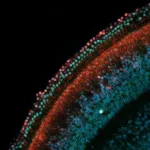(Press-News.org) It’s an idea that has finally gained scientific consensus: Dogs can be a faster, more precise, less expensive — not to mention friendlier — method of detecting COVID-19 than even our best current technology. A growing number of studies over the last two or so years has highlighted the power of dogs in detecting the stealthy virus and its variants, even when they are obscured by other viruses, like those from common colds and flu.
“It went from four papers to 29 peer-reviewed studies — that includes more than 400 scientists from over 30 countries and 31,000 samples,” said UC Santa Barbara Distinguished Professor Emeritus Tommy Dickey, who with collaborator Heather Junqueira of BioScent, Inc., gathered the recent massive number of findings into a review published in the Journal of Osteopathic Medicine.
From their rigorous survey of exclusively peer-reviewed studies published by traditional academic publishers covering both field and clinical experiments, Dickey and Junqueira assert that the collective research demonstrates that trained scent dogs are “as effective and often more effective” than the antigen tests we’re keeping handy at home, as well as the gold-standard reverse transcription polymerase chain reaction (RT-PCR) tests deployed in clinics and hospitals. Not only can dogs detect the SARS-CoV-2 virus faster, they can do so in a non-intrusive manner, without the environmental impact that comes with single-use plastics.
The dog standard
The magic lies in their highly evolved noses, with physical and neural optimizations for smell. Dogs have hundreds of millions of olfactory receptors, compared to roughly five to six million for humans, and a full third of their brains are devoted to interpreting smells, compared to a scant 5% in human brains. All these enhancements mean that dogs can detect very low concentrations of odors associated with COVID infections.
“They can detect the equivalent of one drop of an odorous substance in 10.5 Olympic-sized swimming pools,” Dickey said. “For perspective, this is about three orders of magnitude better than with scientific instrumentation.” In some cases, dogs were able to detect COVID in pre-symptomatic and asymptomatic patients whose viral load was too low for conventional tests to work. And not only that, Dickey added, dogs can distinguish COVID and its variants in the presence of other potentially confounding respiratory viruses, such as those of the common cold or flu.
“They’re much more effective,” Dickey said. “In fact one of the authors that we quote in the paper commented that the RT-PCR test is not the gold standard anymore. It’s the dog.
“And they’re so quick,” he added. “They can give you the yes or no within seconds, if they’re directly smelling you.”
In some scenarios the dog gave the person a quick sniff, sitting down to indicate the presence of COVID. In others, the dog was given a sweat sample to smell, a process that could take a few minutes. The speed is especially important in situations like the earlier phase of the pandemic, when a gap of days between test and result could mean an exponential rise in infections if the person was positive, or scenarios that involve a high volume of people.
Scent dogs such as beagles, basset hounds and coonhounds would be the ideal dog for the task, given their natural tendencies to rely on odors to relate to the world, but the studies showed a variety of other dogs are up to the challenge. Given a few weeks of training, puppies and older dogs, males and females, purebreds and mixed breeds all performed admirably. In one study, a “problem” pit bull terrier that had been abused found a second chance by becoming a perfectly capable COVID detector.
Despite these glowing reviews, there remain challenges to placing man’s best friend in the mainstream of medical diagnoses, although the animals have proven successful in the detection of other conditions, such as diabetes and cancer.
“There’s quite a bit of research, but it’s still considered by many as a kind of a curiosity,” said Dickey, a professor emeritus of geography whose love for Great Pyrenees dogs led him to become a certified therapy dog handler and author of therapy dog books after he retired from formal teaching at UCSB.
Places that were open to using dogs in field experiments tended to be smaller countries such as Finland and Colombia, where there was a desire to explore fast and cost-effective methods of detecting COVID without having to wait for expensive tests to be developed or for reagents to become available.
Of their study, Dickey and Junqueira added, “After conducting this comprehensive review, we believe that scent dogs deserve their place as a serious diagnostic methodology that could be particularly useful during future pandemics, potentially as part of rapid routine health screenings in public spaces. Perhaps, most importantly, we argue that the impressive international quality and quantity of COVID scent dog research described in our paper for the first time, demonstrates that medical scent dogs are finally ready for a host of mainstream medical applications.”
END
Dogs can detect COVID-19 infections faster and more accurately than conventional technology, demonstrating readiness for mainstream medical applications
2023-08-15
ELSE PRESS RELEASES FROM THIS DATE:
Images of enzyme in action reveal secrets of antibiotic-resistant bacteria
2023-08-15
Bacteria draw from an arsenal of weapons to combat the drugs intended to kill them. Among the most prevalent of these weapons are ribosome-modifying enzymes. These enzymes are growing increasingly common, appearing worldwide in clinical samples in a range of drug-resistant bacteria.
Now scientists have captured the first images of one important class of these enzymes in action. The images show how the enzymes latch onto a particular site on the bacterial ribosome and squeeze it like a pair of tweezers to extract an RNA nucleotide and alter it. The Proceedings of the National Academy of Sciences (PNAS) published the findings, led by scientists at Emory University.
The advanced technique ...
USC Stem Cell mouse studies tune into hearing regeneration
2023-08-14
A deafened adult cannot recover the ability to hear, because the sensory hearing cells of the inner ear don’t regenerate after damage. In two new studies, partially funded by the National Institutes of Health and published in the Proceedings of the National Academy of the Sciences (PNAS), USC Stem Cell scientists explain why this is the case and how we might be able to change it.
“In the non-sensory supporting cells of the inner ear, key genes required for conversion to sensory cells are shut off through a process known as ‘epigenetic silencing.’ By studying how the genes are shut off, we begin to understand how we might turn ...
Scientists identify genes linked to high production of key antibody
2023-08-14
A collaboration led by UCLA and the Seattle Children’s Research Institute has yielded new knowledge about the genes responsible for the production and release of immunoglobulin G, the most common type of antibody in the human body.
The finding has the potential to advance manufacturing of antibody-based therapies for diseases such as cancer and arthritis, as well as the development of medical treatments that rely on the production of antibodies.
Antibodies are a group of proteins that are crucial to the immune system. Immunoglobulin G, or IgG, ...
A fate determination fork-in-the-road for germinal center Tfh and T memory cells
2023-08-14
BIRMINGHAM, Ala. – Follicular helper T cells, or Tfh cells, have a crucial role in immune defense. Without Tfh cells, B cells cannot form germinal center, or GC, responses during which high-affinity antibodies are generated.
When naïve CD4-positive CD4+ T cells receive news of an infection elsewhere in the body, they become activated with additional cell-surface markers, and they differentiate in two directions, becoming either PD-1+CXCR5– or PD-1+CXCR5+ T cells. PD-1 and CXCR5 are ...
University of Texas System Regents announce plans to build UT Medical Center on site of Erwin Center
2023-08-14
AUSTIN ― Today The University of Texas System Board of Regents Chairman Kevin P. Eltife announced plans to launch a monumental healthcare initiative to accelerate and expand UT Austin’s burgeoning medical district into a world-class academic medical center for education, research and patient care. The University of Texas at Austin Medical Center will start with two new hospital towers -- The University of Texas MD Anderson Cancer Center and a UT Austin hospital. MD Anderson, the nation’s #1 cancer hospital, ...
Scientists reveal how proteins drive growth of multiple cancer types
2023-08-14
Scientists have completed a deep analysis of the proteins driving cancer across multiple tumor types, information that can’t be assessed by genome sequencing alone. Understanding how proteins operate in cancer cells raises the prospect of new therapies that block key proteins that drive cancer growth, or therapies that trigger immune responses to abnormal proteins created by cancer cells.
Led by Washington University School of Medicine in St. Louis, the Broad Institute of MIT and Harvard, Brigham Young University and other institutions around the world, the Clinical Proteomic Tumor Analysis Consortium investigates key proteins driving cancer and how ...
Social determinants of health contribute to higher CVD mortality rates in Black persons
2023-08-14
Embargoed for release until 5:00 p.m. ET on Monday 14 August 2023
Annals of Internal Medicine Tip Sheet
@Annalsofim
Below please find summaries of new articles that will be published in the next issue of Annals of Internal Medicine. The summaries are not intended to substitute for the full articles as a source of information. This information is under strict embargo and by taking it into possession, media representatives are committing to the terms of the embargo not only on their own behalf, but also on behalf ...
Why are Black adults at greater risk of death from heart disease? Study blames social factors
2023-08-14
Black Americans are 54% more likely to die of cardiovascular disease than White Americans, despite a substantial overall reduction in cardiovascular disease mortality nationwide.
Now, a new study from Tulane University published in Annals of Internal Medicine has found that this racial disparity can be attributed to social factors such as unemployment, low income, and lack of a partner rather than known factors such as hypertension and obesity.
“For so many years we have focused on smoking, diet, physical ...
New research offers solutions to improve drinking water access in developing countries
2023-08-14
In 2020, 771 million people worldwide still lacked access to clean drinking water, according to UNICEF and the World Health Organization.
For this reason, many nongovernmental organizations (NGOs) prioritize building new water projects, including handpumps and small piped systems, to bring clean water to rural areas of developing countries.
Alfonso Pedraza-Martinez
New research from Alfonso Pedraza-Martinez, the Greg and Patty Fox Collegiate Professor of IT, Analytics and Operations in the University of Notre Dame’s Mendoza College of Business, examines the critical problem of drinking ...
UC study focus: faster, more accurate way to diagnose lung infections
2023-08-14
A federally funded study, led by University of Cincinnati researcher Nalinikanth Kotagiri, looks to develop a new imaging method that can identify certain types of lung infections — in real time — in order to speed up treatment for critically ill patients.
Kotagiri, an associate professor of pharmaceutical sciences at the UC James L. Winkle College of Pharmacy, has been awarded a five-year $3 million, R01 grant from the National Heart, Lung, and Blood Institute (NHLBI) to develop and study the effectiveness of different kinds of injectable probes (metallic contrast agents) that would collect at the site of the infection and immediately light up under a nuclear ...



